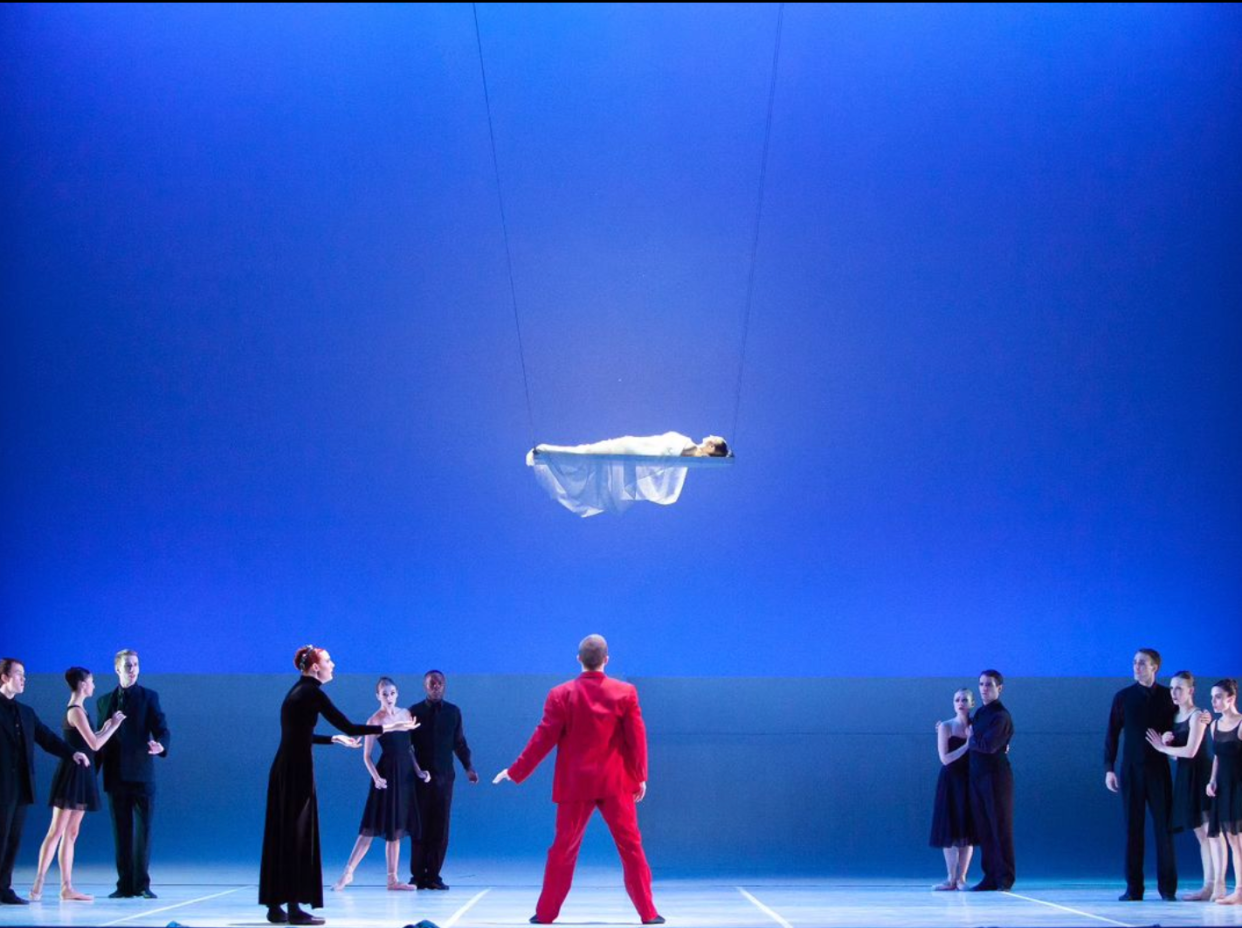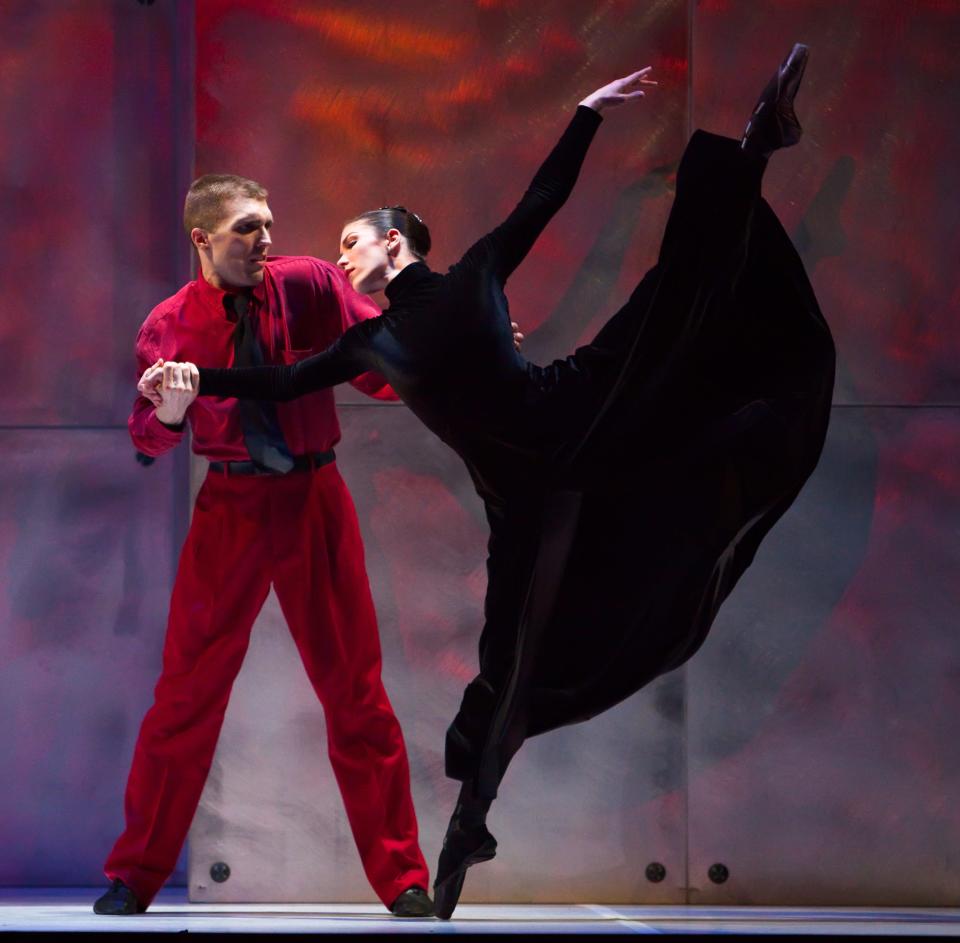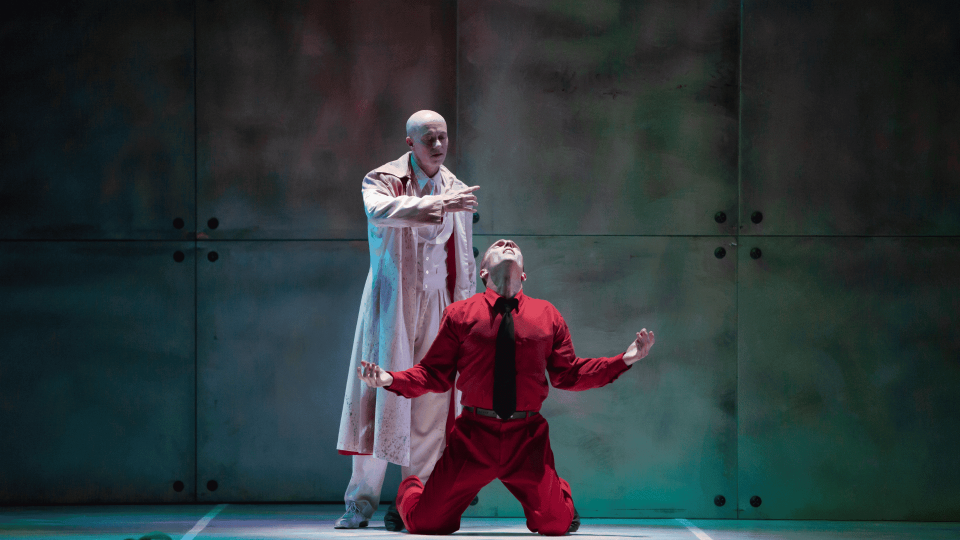Stephen Mills' hypnotic 'Hamlet' changed everything for Ballet Austin. See it this month.

- Oops!Something went wrong.Please try again later.
October 27, 2000, marked the start of a new era in Austin dance.
Stephen Mills, then freshly anointed as artistic director of Ballet Austin, premiered a full-length dance. This time, it was not a fairy tale such as "Cinderella" or "The Nutcracker." Nor was it an evening of short dances stripped of narrative, one of Mills' proven fortes.
It was "Hamlet." Yes, that "Hamlet."
Mills based the new dance on William Shakespeare's tragedy about a prince seeking to avenge the death of his father, which some critics contend is the greatest play in the English language.
Shockingly, it had never been done as a ballet before. As far as we know.
Teresa Lozano Long Community Day: What you need to know about the Long Center, its namesakes and a free day of performances
The stage play has been near the center the dramatic repertoire for more than 400 years, yet no previous ballet by that name turns up in repeated searches through dance history.
Perhaps earlier dance-makers were intimidated by the tragedy's braided storylines, whose 30,000 words, if uncut, can fill more than four hours of stage time.
Not to worry, Mills' "Hamlet," which returns Sept. 15-17 to the Long Center for the Performing Arts, is slim at two 30-minute acts split by one 20-minute intermission.

Breaking with customary 'Hamlet' in 2000
Shrugging off three hours of the play's plot, including such characters as Rosencrantz and Guildenstern, made the core narrative all the more compelling.
"You can only tell one story in dance," Mills says. "Once I decided it would be about a young man's revenge for the murder of his father, the storyline became very direct. I included Hamlet's relationship with Ophelia, leaning into it to make a more romantic story for them. That makes her death more dramatic."
To add another provocative element, Mills employed the music of Philip Glass, whose hypnotic style was at that time more closely associated with opera, movies, studio recordings and chamber music.
"Glass doesn't set the tone," Mills says. "He doesn't set the pace. He doesn't even set the rhythm. His music is so open and fluid. It allows the choreographer to place ideas on top of it."
To complete the package in 2000, striking scenery and costumes, often lighted in stark contrasts, complemented Ballet Austin's dancers, who were improving by leaps and bounds. Not just physically, but as dancer-actors.
More: Austin's State Theatre to undergo big makeover thanks to downtown hotel neighbor
"Hamlet" was an instant hit.
"The ballet is stunningly modern," dance critic Sondra Lomax wrote in the American-Statesman, "organically and seamlessly constructed and supported by strong dancers, (and) a visually intriguing set and sophisticated costumes. The result is excellent dance theater in a sleek, stylish portrayal of Shakespeare's tragedy. Mills uses the pulsating restlessness of Phillip Glass music to heighten dramatic tension and support his dense, constantly shifting choreography."
Knowing a good thing, Ballet Austin has revived "Hamlet" three times. Companies ranging from Atlanta to Washington, D.C., and Augsburg, Germany, have brought Mills in to stage it. Oklahoma City Ballet plans to add its name to the "Hamlet" playlist in October.
"It's always different because you don't know the dancers in advance," Mills says. "So I would cast it as I went along, staging some of the group material. Sometimes you get it right, sometimes not. Some companies are more adept at narrative. Here in Austin, I know the dancers already so we can talk more about characters and relationships."
Playing the roles Hamlet, Ophelia, Gertrude and Laertes can get intense, so those roles are double-cast, which means one set of dancers plays Friday and Sunday, while the other set appears Saturday and during the Thursday preview.
Back in 2000, the company's leadership had taken a risk with "Hamlet."
"It was the most money that Ballet Austin had spent on a show," Mills says. "It's gratifying that it became so popular. It allowed me to do something other than a fairy tale. Ballet can be pretty limiting in terms of audience expectations."

What can audience members expect to see onstage?
Visually, the original "Hamlet" was startling, what with Christopher McCollum's Giorgio Armani-inspired costumes, a dance of death in a trough of water, and a body levitating in a sheath of light.
"The striking set designed by Mills and Jeffrey Main consisted of three huge transparent cylinders and a large platform in the first act," Lomax reported in 2000, "followed by a simple white screen that dissects the stage horizontally. The starkness created an appropriately chilling atmosphere."
Lomax described the dancers: "There's marvelous integrity to Mills' methods. The synchronicity of acting and dancing stems from calculated phrasing, and he skews regulation steps in unregulated ways. He excels at transitions, which is why Hamlet's spins melt into floor movements or morph into shifting pauses punctuated by simple gestures. The duets and partnering sections look spontaneous except for the calculated fencing match at the ballet's end."
Ever wanted to learn how to look at art? Austin curator Annette Carlozzi shares her secrets
Here's how I described the movement in a feature story: "Shoulders tilt to form art-deco curves. Hips gyrate around invisible axes. Limbs twist into blossoms, then droop like warm honey. Skin communicates with skin, turning partners into intimate extensions of one another. Stephen Mills makes dances of silk."
After he creates a new work, Mills does not teach the movement to the next set of Austin dancers during a revival. That task falls to Associate Artistic Director Michelle Martin, who in this case oversees the group scenes, and Rehearsal Director Chris Swaim, who coaches the principals. They work from notes and videos of previous performances.
"Back in 2000, I was working by myself," Mills says. "Now I'm available to make the connections and small changes."
What 'Hamlet' has meant for Ballet Austin
It's safe to say that "Hamlet" sealed the reputation for Mills and this ballet company. Only one of his original full-length dances has not been revived, and that's because his brilliant "Grimm Tales" premiered in 2019. You want to space these things out.
Mills has further advanced the company's fame through "Light: The Holocaust and Humanity Project," an extraordinary marriage of dance and civic engagement which played on two continents, as well as a pioneering tour of China in 2016.
'Botanical Beats' concert: Musician makes plants sing. Here's why you should root for it
Having a bold creative force as artistic director gives Ballet Austin a distinct identity. Some directors are simply curators of works made by others. Some focus almost entirely on the legacy of departed dance-makers, expecting all the dancers to perform in the same way in every show.
"We can be more flexible," Mills says. "Someone in the front is moving the focus. That person is me."
Ballet Austin's 'Hamlet'
When: 7: 30 p.m. Sept. 15-16, 3 p.m. Sept. 17
Where: Long Center for the Performing Arts, 701 W. Riverside Drive
Tickets: $15-$99
Info: balletaustin.org
This article originally appeared on Austin American-Statesman: Ballet Austin revives Stephen Mills' fame-making 'Hamlet'

